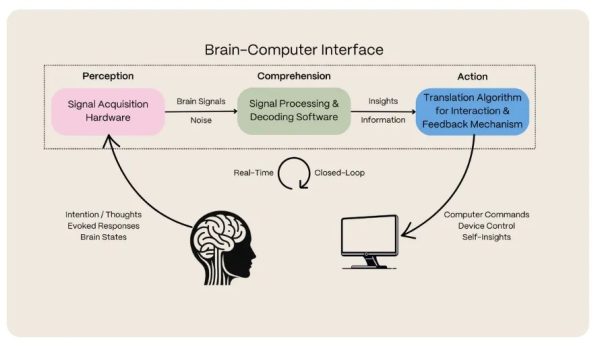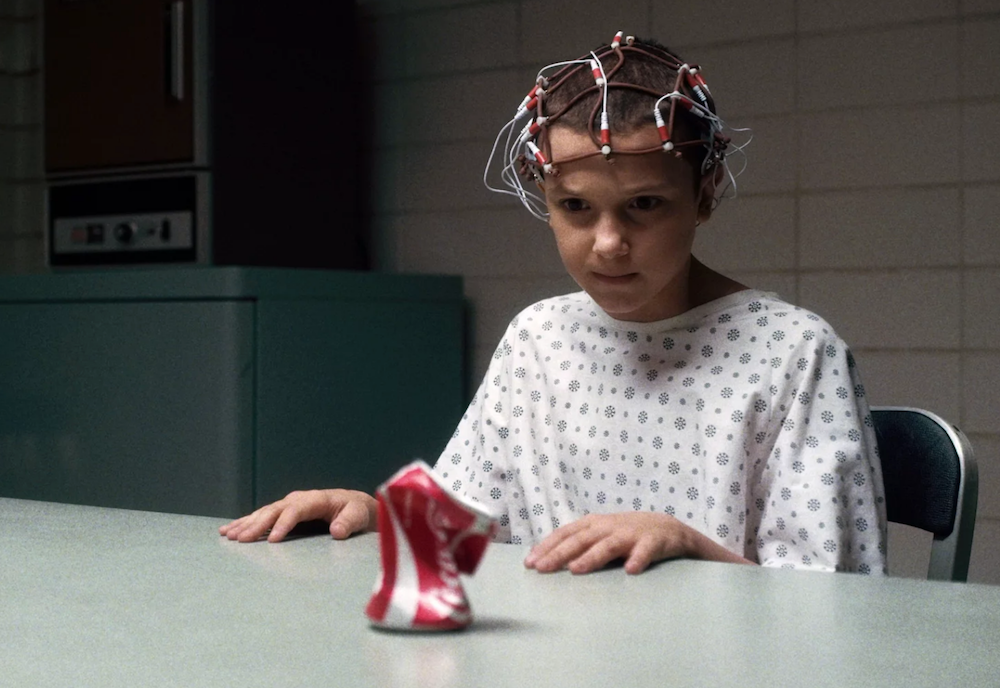The iconic sci-fi TV series Stranger Things, known for its eerie experiments, telekinetic nosebleeds, interdimensional portals, and El’s obsession with Eggos, tested the limits of the imagination and science. For decades, brain-reading machines only belonged to the world of science fiction. However, due to new technological advancements in NeuroAI, the bridge between neuroscience in artificial intelligence, brain-computer interfaces are beginning to blur the line between Hawkins and our reality.
At the core of this transformation are brain-computer interfaces (BCIs): systems that establish a direct connection and mode of communication between the brain’s electrical activity and external devices (e.g. computers, wheelchairs, etc.). Every second, our brain sends thousands of pulses across its neurons, carrying thoughts, memories, or impulses, helping us function and perform our daily tasks.
BCIs use electrodes placed either inside of the brain or on top of the scalp to capture these pulses, turn them into data, and process their messages using algorithms. The result? Computers can now show these pulses as letters on a screen, movement in a robotic arm, or even audible speech. For the first time, machines can listen to the human mind, opening new possibilities for how we interact with the world.

Turning Sci-fi into Sci-fact
The idea of “mind-reading” might sound like a plot from an episode of Stranger Things—El surrounded by the plain white walls of Hawkins Lab, strapped to computer wires, and scientists scribbling down their notes. But the reality of this phenomenon is emerging in labs across the globe. Researchers have already shown how BCIs can be used to help an immobile person control a wheelchair simply with their thoughts.
Other scientists have developed technologies to translate thoughts into readable text, providing a voice to those who cannot speak. Beyond technology for the disabled, researchers have been able to construct images or sentences from brain activity, making it possible for us to get a glimpse into someone’s brain. Even though it’s not full-blown mind reading, these advancements are bringing us closer to Hawkins Lab.
History of Mind-Reading
BCIs have been around since the 1970s, but haven’t gained much traction until recently, due to government restrictions on testing such technology. However, one notable experiment from the decade was known as the Montauk Project, the inspiration for Stranger Things itself. Conspiracy theorists and survivors of the experiments claim that this government-led project abducted and mistreated its subjects. More horrifying than these atrocities is what the Montauk Project’s goal really was: an experiment to create powerful war weapons—children capable of time travel, mind control, and teleportation.
Although this has not officially been confirmed by the government, many conspiracy theorists believe these claims to be true, including many residents on Long Island, the site of the conspiracy, who have always had their suspicions about the area. Unexplained government installed radar towers near the location have had animals running around frantically for no apparent reason, and residents walking nearby of the towers feeling beset by throbbing migraines.
Regardless of the validity of these claims, it is evident that technology aiming to connect machines with the human brain was already highly developed in the late 1900s. Over the last couple of years, Elon Musk himself has entered the scene with his new startup Neuralink. Musk has popularized the “brainchip”, known as a Neuralink, a brain implant which has successfully translated the thoughts of monkeys, pigs, and even humans into the movement of a cursor on a screen.
Will We Turn Into Another Hawkins Lab?

Yet with this progress comes a darker side, one that Stranger Things fans will find all too familiar. In the show, it wasn’t just about the dangerous Demogorgons or the Mind Flayer: it was about the power and willingness of government authority to dictate and exploit the use of these new technologies. In our reality, brain computer interfaces present many ethical concerns which are just as unsettling. Who owns the data collected from your brain? What happens to privacy when your neural pulses are no longer thoughts kept only to yourself? If a person can’t move or speak, how do they meaningfully consent to a Neuralink chip or a brain implant?
In response to these emerging technologies, Chile passed a “neurorights” law protecting mental privacy, in 2023. Other countries are also considering similar measures, recognizing that brain data might be the most sensitive information of all. After all, while losing control over phone calls is one thing, losing control over the most private area of our lives—our thoughts—will render us powerless. Even though these ethical concerns remain a looming threat as new technology makes advancements, scientists remain hopeful for the future of BCIs. Considering their importance for the physically disabled community, this technology can prove to have a positive impact on our society in the long term if regulated properly.
Our Stranger Reality
Although we may not have sensory deprivation tanks or telepathic children, the parallels between Hawkins Lab and our reality is striking. Brain computer interfaces are not just revolutionizing the future of technology, but also pushing the limits of privacy. Mind-reading is no longer science fiction—it’s science fact—and the only thing stranger than Stranger Things is how quickly it is becoming our reality.

